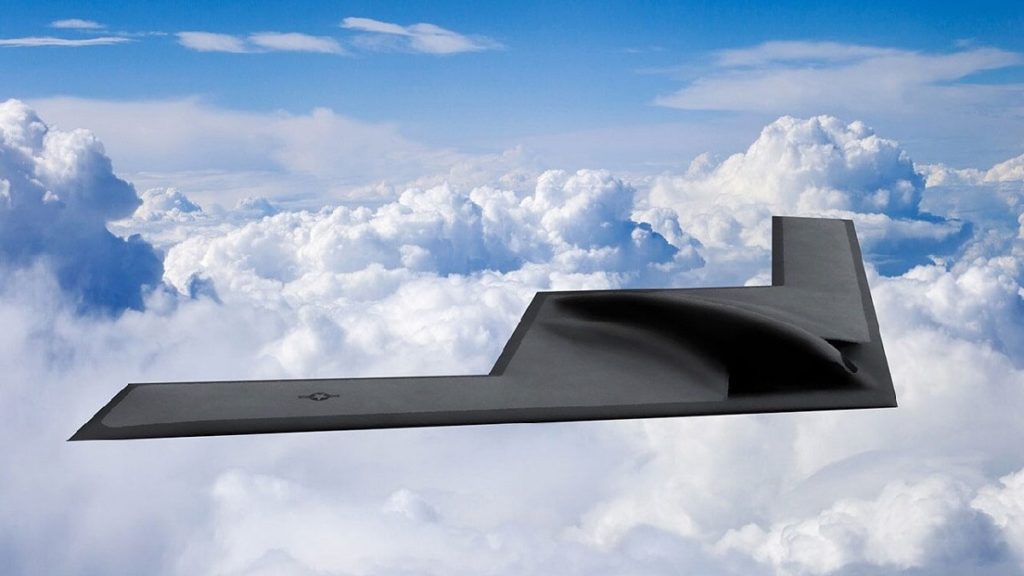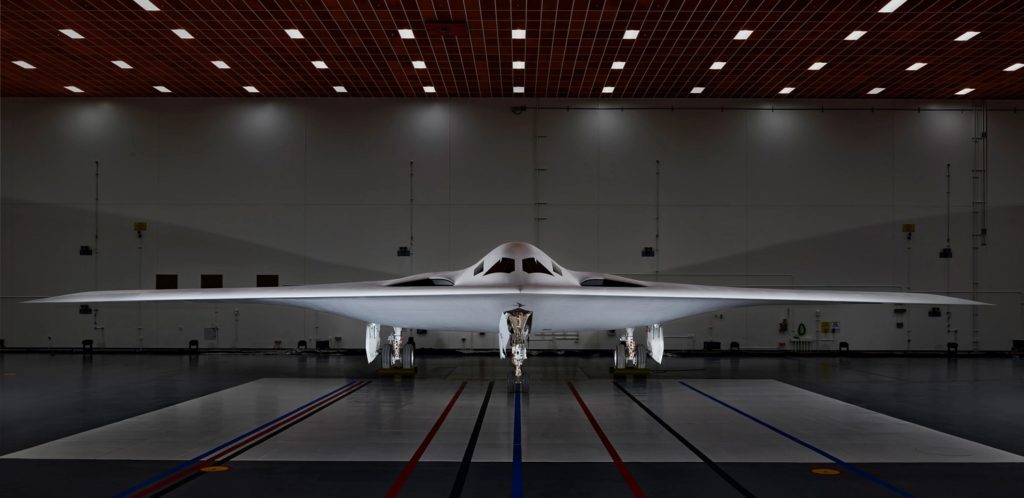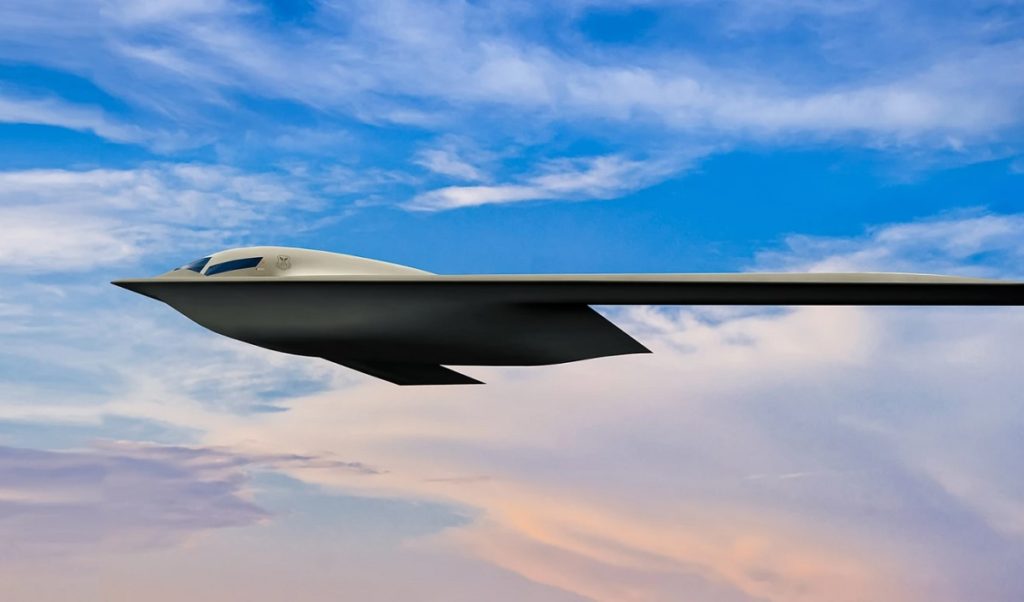A round of debate about Australia acquiring the USAF’s new B-21 Raider has followed the stealthy aircraft’s public unveiling in early December. Whether in support or opposition, the discussion has focused exclusively on the aircraft’s utility as a long-range strike asset. But there is more to the B-21 than the bomber.
Publicly available information is limited, but it is clear the Raider is a multi-role platform with utility far beyond strike. The B-21 is more than the B-1B and B-2A aircraft it will supersede – the ‘B’ bomber designation says more about obsolete categorisations than it does about the aircraft. A narrow focus on the B-21’s primary function is akin to thinking about attack submarines as nothing more than torpedo launchers.
The B-21’s appropriateness for Australia is an open question but answering it requires acknowledging B-21 would do much more than “one thing” as one opponent has suggested.
In his remarks at the unveiling ceremony, US Secretary of Defense Lloyd Austin highlighted the wider utility of the B-21 beyond its primary strike role. He described it as “multi-functional” and explicitly referenced its intelligence gathering, battle management, and partner integration capabilities. Austin also emphasised that the aircraft’s open-systems architecture made it “highly adaptable” and able to integrate new systems and weapons “that haven’t even been invented yet”.
Each of these is relevant to the B-21’s potential utility for Australia.
Long-range penetrating reconnaissance
The B-21’s reconnaissance potential is inherent to its design as a penetrating strike asset. According to available information, the Raider will be capable of precisely delivering large payloads, up to the aptly named Massive Ordnance Penetrator with its 13,500+ kg warhead. These weapons must be delivered to mobile and hardened targets in the most heavily defended airspace in the world, which includes the skies around modern naval task groups.
The weapon design trade-off trinity of payload, range, and speed means large warheads – let us say more than the 450 kg warhead in the RAAF’s Joint Air-Surface Standoff Missile (JASSM-ER) or the RAN’s potential Tomahawk Land Attack Missile – are only feasible in ‘stand-in’ weapons. Such weapons have limited if any propulsion, obliging delivering aircraft to closely approach the target. Delivering penetrating weapons effectively against hardened targets means the aircraft must have the flexibility in routing to deliver weapons from an optimal axis and altitude.
The need for a large but stealthy aircraft such as the B-21 to penetrate and persist inside defended airspace means it must be a superb intelligence gatherer, for two reasons.
First, instant awareness of threat locations and actions is crucial to minimising the B-21’s chances of detection. Second, a critical method of lowering the B-21’s risk of compromise is reducing dependencies on external support, such as large surveillance aircraft, which could alert defenders to the Raider’s presence. This second reason also means the B-21 must be able to locate and track targets unaided, including mobile targets.
In short, to be a long-range penetrating striker, the B-21 must be a survivable reconnaissance system of the first order. Notably, the USAF’s B-1B fleet, which the B-21 will replace, has increased its focus on long-range intelligence gathering missions as part of transitioning to the new aircraft.
Australia currently lacks a penetrating and persistent reconnaissance capability, and has no apparent intention to rectify this situation. Instead, the ADF will rely on ‘stand-off’ assets, such as satellites or large aircraft, that must remain outside defences. This dependence on stand-off sensors hinders its gathering information of sufficient quality and timeliness for precision weapons to find their targets. This is especially problematic for mobile targets such as vehicles and ships. The B-21 can fill this gap in peace and war across huge distances.
A bigger, stronger quarterback
Some ideas about the Raider’s battle management capabilities can be deduced from its description as the “world’s first sixth-generation aircraft,” a “digital bomber,” and the emphasis on open architecture and adaptability.
In a mid-December interview, the USAF’s second-most senior uniformed officer underscored the priority placed on developing and operating the B-21 as part of a wider ‘family of systems’ in which the Raider could perform multiple roles depending on context and need.
The Raider continues the information-centric design philosophy that drove the development of the F-22 and F-35 fifth-generation fighter aircraft. Sophisticated information gathering, processing, and fusion allow these aircraft to see first and with greater clarity while remaining undetected due to their stealth characteristics. Air forces operating the F-22 and F-35 have exploited this advantage by using them as “quarterbacks” directing the employment of larger forces.
The Raider will probably be a bigger, stronger quarterback with far greater endurance. The larger B‑21 will host more fuel, communications, sensors, and processing power – in human or machine form – than the fighter airframes. The emphasis on open-systems architecture and adaptability means this information processing power will evolve over time, and indicates the B-21 program is avoiding the technical and proprietary stovepipes that constrained the quarterback potential of the F-22 and F-35 for years.
The Raider’s emphasis on battle management and potential for growth anticipates the hybrid human-machine future of air operations. Autonomous uninhabited wingmen are a fundamental element of the B-21’s operating concept and there are multiple future candidates, including a possible dedicated long-range strike drone, the USAF’s Collaborative Combat Aircraft, or the Australian-made MQ-28A Ghost Bat.
The Raider may also work closely with existing uninhabited systems, such as the RQ‑170 and RQ‑180. The B-21’s unique value will be its ability to quarterback using secure, low latency, high-capacity line-of-sight communications from inside defended airspace for extended periods.
The Raider’s onboard processing power and communications probably also underpin Austin’s reference to it “integrating with allies and partners.” The B-21’s manufacturers, Northrop Grumman, also built the Battlefield Airborne Communications Node (BACN) to provide a line-of-sight options of bridging the gaps between the communications networks used by different military services and countries. This experience has almost certainly informed the Raider’s development and ability to communicate with partners.
Importantly, the B-21’s collaborative functions are a departure from the ‘alone and unafraid’ operating model employed by previous stealth strike aircraft, the B-2A and F-117A.
For its most sensitive and risky missions, the B-21 will probably minimise its communications. However, the Raider’s successful execution of such super-sensitive missions may enable other forces to follow-up, with the B-21 leveraging the awareness it has built up to inform and coordinate those forces. It could open the door and then hold it open for others to follow.
This would also fill a gap in the ADF’s tool kit. Australia lacks a survivable and persistent long-range battle management option and any evident plans to develop one. The RAAF’s existing E-7A Wedgetail is a highly capable battle manager with long range and endurance, but it cannot penetrate defended airspace let alone persist in there. Nor can any of the other large aircraft in the RAAF’s current or planned inventory.
The F-35A Lightning can penetrate defences but lacks range, endurance, and processing capacity. The B-21 could penetrate, persist, and help others do more.
Conclusion
An Australian B-21 fleet would transform the ADF’s long-range strike capability. Like nuclear submarines, RAAF Raiders alone would place an enormous question mark front of mind for anyone considering misadventure anywhere in the Indo-Pacific.
But consideration of a B-21 acquisition must recognise its abilities to gather, process, and share information at exceptionally long-ranges and inside defended airspace, including over naval task groups. The US’s apparent intent to leverage the Raider’s strengths in these areas in a quarterback role to enhance the entire human-machine force is also instructive for future development.
Based on the available information, the B-21 would fill multiple gaps in the ADF’s order of battle in addition to its primary strike function. Filling these gaps would enhance the entire force and grant governments new options in peace and war.
Determining if the B-21 is a good investment for Australian taxpayer dollars must consider many, many factors. Foremost among them, however, must be a recognition that the B-21’s utility goes far beyond the bomber.
The post The B-21 – Beyond the Bomber appeared first on ADBR.



